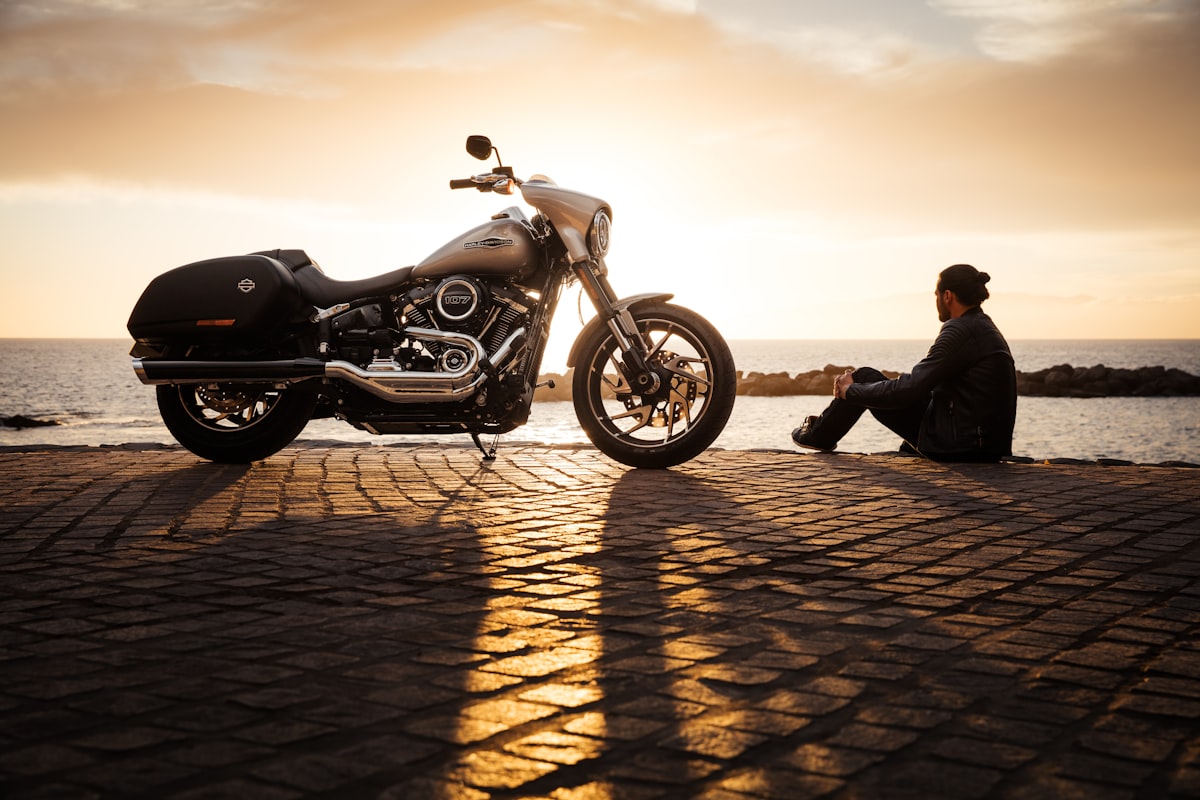
Riding is an exhilarating experience like no other, but it also requires a high level of focus and attention to detail to ensure safety. Even those that have been riding for years tend to forget the basics. Here is a refresher to help you reach your destination safely:
- Take a professional rider training course. A skilled rider with a safe attitude is irreplaceable. Book your course well in advance as space is generally limited and fill up quickly. There are courses for different skill levels as well so put your pride aside, even if you have been riding for some time now.
- Ensure your ride is maintained. Whether it be proper storage or regular maintenance, keeping your ride well maintained can prevent catastrophe. Visit a local motorcycle mechanic on a regular basis and especially at first sign of any issue.
- Scan the road ahead so you can identify and avoid potential hazards. Predict what you might do if a dangerous situation presents itself. Examples may be gravel, potholes, brake snakes, dust, rain or heavy traffic. Mentally preparing for a safe outcome .
- Limit the distance of your trip. If you're planning to go long distance riding, route to rest and stretch your legs every 100km or so. Try to limit your distance of 300 to 500 km/day so you can enjoy the trip through and through.
- Wear an approved motorcycle helmet and fasten it properly. Most crashes occur at speeds around the 50km/h mark and helmets are extremely effective at preventing head injuries at those speeds.
- Wear highly visible clothing (especially at night) and make sure that your headlight is functioning properly. Always wear protective clothing and proper motorcycle gear. Dress for the slide, not the ride.
- Communicate with drivers in other vehicles by using proper signals, lane positions, and brake lights. Try to establish eye contact with the other drivers whenever possible. Remember - if you can't see them, they can't see you.
- Keep an adequate space cushion when following, being followed, sharing your lane, passing other vehicles, or being passed. Slow down and respect the hazards of speed according to road and weather conditions. Many single-vehicle motorcycle collisions occur from speeding and losing control in a curve or in a situation of unpredictable vehicle behavior. Even if you're the best rider in the world, you can't control how others drive.
- Remain alert, keep hydrated, and pace yourself. Your ride is directly related to your physical and mental state. Also, always look twice before advancing through intersections. It may save you from a collision with “red-light runners” or “left turners”. If you're in a tough mental state, think twice before going for a ride.
- Be certain you have proper insurance in place. If you're financing a motorcycle, you're likely already locked in with full coverage. Otherwise, unless you're well set up for financial downfall, you'll want to be sure that you have the proper protections in place in the event of something catastrophic.
Motorcycle safety is a top priority and should not be shrugged off no matter your skill level as a rider. By taking all of the points in this article into consideration, you can greatly reduce the risk of accidents. Remember, it is ultimately up to you, the rider, to take every precaution to avoid collisions and falls. We hope that this blog has provided you with valuable information and tips to keep you safe on the road. Happy and safe riding!
